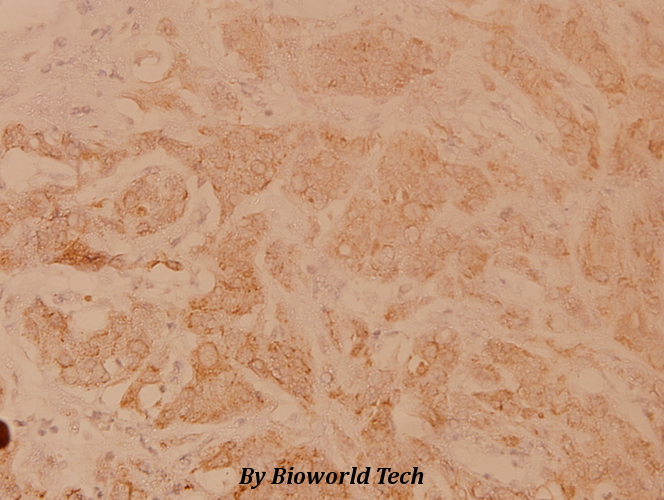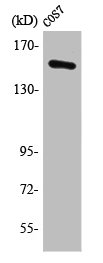POLR3A antibody
GTX106241
ApplicationsImmunoFluorescence, ImmunoPrecipitation, Western Blot, ImmunoCytoChemistry
Product group Antibodies
TargetPOLR3A
Overview
- SupplierGeneTex
- Product NamePOLR3A antibody
- Delivery Days Customer9
- Application Supplier NoteWB: 1:500-1:3000. ICC/IF: 1:100-1:1000. IP: 1:100-1:500. *Optimal dilutions/concentrations should be determined by the researcher.Not tested in other applications.
- ApplicationsImmunoFluorescence, ImmunoPrecipitation, Western Blot, ImmunoCytoChemistry
- CertificationResearch Use Only
- ClonalityPolyclonal
- Concentration0.43 mg/ml
- ConjugateUnconjugated
- Gene ID11128
- Target namePOLR3A
- Target descriptionRNA polymerase III subunit A
- Target synonymsADDH, C160, HLD7, RPC1, RPC155, WDRTS, hRPC155, DNA-directed RNA polymerase III subunit RPC1, DNA-directed RNA polymerase III largest subunit, DNA-directed RNA polymerase III subunit A, RNA polymerase III 155 kDa subunit, RNA polymerase III subunit C1, RNA polymerase III subunit C160, RNA polymerase III subunit RPC155-D, polymerase (RNA) III (DNA directed) polypeptide A, 155kDa, polymerase (RNA) III subunit A
- HostRabbit
- IsotypeIgG
- Protein IDO14802
- Protein NameDNA-directed RNA polymerase III subunit RPC1
- Scientific DescriptionDNA-dependent RNA polymerase catalyzes the transcription of DNA into RNA using the four ribonucleoside triphosphates as substrates. Largest and catalytic core component of RNA polymerase III which synthesizes small RNAs, such as 5S rRNA and tRNAs. Forms the polymerase active center together with the second largest subunit. A single stranded DNA template strand of the promoter is positioned within the central active site cleft of Pol III. A bridging helix emanates from RPC1 and crosses the cleft near the catalytic site and is thought to promote translocation of Pol III by acting as a ratchet that moves the RNA-DNA hybrid through the active site by switching from straight to bent conformations at each step of nucleotide addition (By similarity). Plays a key role in sensing and limiting infection by intracellular bacteria and DNA viruses. Acts as nuclear and cytosolic DNA sensor involved in innate immune response. Can sense non-self dsDNA that serves as template for transcription into dsRNA. The non-self RNA polymerase III transcripts, such as Epstein-Barr virus-encoded RNAs (EBERs) induce type I interferon and NF- Kappa-B through the RIG-I pathway.
- Storage Instruction-20°C or -80°C,2°C to 8°C
- UNSPSC12352203





